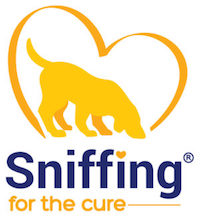Cancer is the leading cause of death in dogs over the age of 10. Over 6 million dogs are diagnosed with cancer annually in the USA, and approximately 1 in 3-4 dogs at some stage in their life will develop cancer. The cancer incidence is roughly the same as humans.
Although most cancer cases occur more often in older dogs, it can affect younger dogs as well. Albert, my black Labrador, was diagnosed with a Mast Cell Tumor when he was three years old. This past summer, he was found to have a different type of cancer called melanoma. A small black mass grew over his left eyelid over months.
Like people, dogs can develop cancer (or tumors) that affect almost any organ in their bodies. Also, like Albert, dogs can have more than one cancer during their lifespan. The symptoms can vary from:
🐾 Bleeding
🐾 Difficulty breathing
🐾 Lack of appetite or difficulty eating
🐾 Lumps or discolored skin
🐾 Persistent vomiting or diarrhea
🐾 Abdominal swelling
🐾 Changes in weight
🐾 Pain
🐾 Swelling
Since the symptoms are not specific, it is always good to consult your veterinarian when you see a change or sign in your pet.
Why Do Some Dogs Get Cancer More Than Others?
In dogs, hereditary risk factors play a role in the development of cancer. For example, some breeds are more prone to develop specific types of cancer. Other breeds like Chihuahuas have low rates of cancer.
As the table below shows, pups are susceptible to the same types of cancers affecting humans. There are genetic characteristics that contribute to the higher rates of cancer among these animals. The increased cancer risks these animals face may be caused by a combination of genes or a single gene.
| CANCER TYPE | DESCRIPTION OF THE CANCER | DOG BREED |
| Lymphoma | Cancer that affects the immune system | Old English sheepdog, boxer, pointer, golden retriever, Rottweiler, St Bernard, Scottish terrier, bulldog |
| Osteosarcoma | Bone cancer | Large and giant breeds, such as Irish wolfhound, Scottish deerhound, Great Dane, BMD, mastiff, St Bernard, Irish setter, Golden retriever, Rottweiler, Dobermann pinscher, greyhound |
| Soft tissue tumor | Cancer that develop in the muscle, fat, fibrous tissue, blood vessels, or any other supporting tissue of the body. | Larger dogs, such as boxer, Bernese mountain dog, Airedale terrier, Great Dane, St Bernard, basset hound, golden retriever |
| Hemangiosarcoma | Cancer that develops in the blood vessels | German shepherd, Bernese mountain dog, golden retriever, flat-coated retriever, Portuguese water dog, Labrador retriever, boxer, Skye terrier, Australian shepherd |
| Mast Cell Tumor | These tumors can form masses in the skin. They can also affect other areas of the body, including the spleen, liver, intestine, and bone marrow. | Boxer, pug, Labrador retriever, golden retriever, vizsla |
| Meningioma | Brain tumor | Medium and long-nosed breeds, such as Labrador, golden retriever, collies |
| Glioma | Is a type of tumor that occurs in the brain and spinal cord | Short-nosed breeds, including boxers, bulldogs and terriers |
| Testicular Seminoma | Cancer of the testicle | Norwegian elkhound |
| Squamous Cell Carcinoma | Is a tumor of skin cells | Standard poodle, giant schnauzer |
| Melanoma | Is a type of skin cancer | Poodle, Beauce Shepherd, schnauzer and Scottish terriers |
| Table information was adapted from: Comparative Oncology: what dogs and other species can teach us about humans with cancer |
The good news is that if the cancer is caught early, most can be curable. That is why taking your dog for regular checkups is essential. Both of Albert’s cancers were treated early. He recovered like a champion from his surgery, and all the tumor was taken out. At the moment, nothing is stopping him from enjoying the water and playing fetch!





No Comments